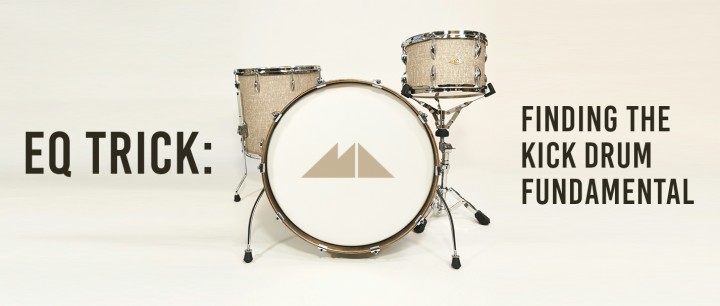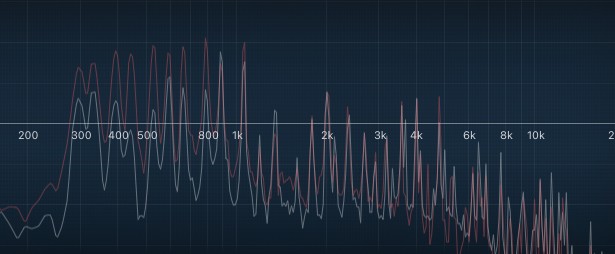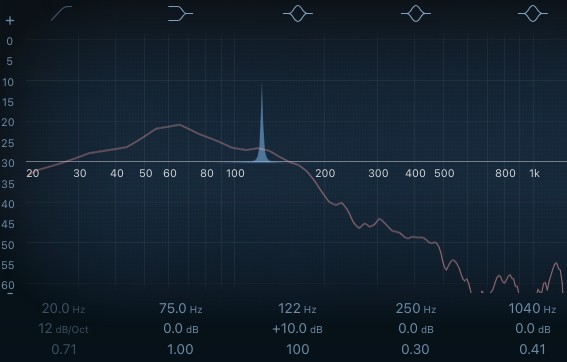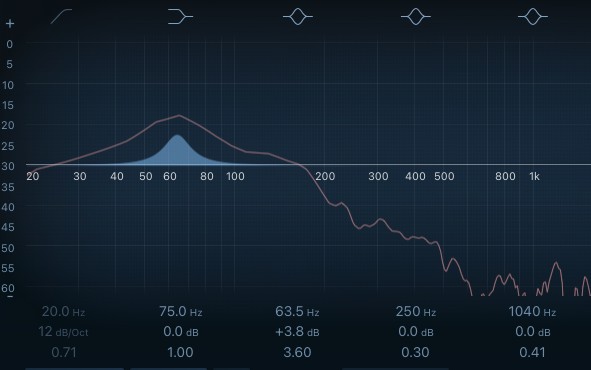
Want to beef up your kick drum sound but don't know where to start? Well you're in luck, because today we'll show you how, featuring audio examples below, with this quick EQ guide!
First, time for a quick lesson in acoustics (don't worry, it'll be worth it) - musical sounds, in fact all sounds, are made up of combinations of individual tones, known as harmonics or partials. In theory at least, it should be possible to recreate any sound by serving up the right combination and intensity of these partials.

The pitch relationships between these partials determine whether we perceive the given sound as pitched (e.g. a piano note) or inharmonic (e.g. a snare drum hit), with the partial with the lowest frequency of the set being referred to as the 'fundamental'. This partial is also typically the loudest.
This fundamental frequency also determines the pitch that we perceive the given note to be in harmonic sounds e.g. 440Hz in an A4 note; for inharmonic sounds such as drums though, the fundamental acts more as an anchor rather than giving them a definite pitch.
If you've been producing electronic music for a while, you might already have an intuitive knowledge of this if you're used to EQing different instruments and looking at a spectrum analyser - I'm willing to bet you've noticed a low peak frequency area that changes with the note being played for pitched instruments.
This fundamental frequency is often the most important partial making up a sound and boosting it can help sonic definition, pitch clarity and the instrument's ability to cut through a mix.

Slippery Pitch
For instruments that can change their pitch such as a guitar, it is tricky to boost the fundamental with conventional EQ as the frequency is constantly changing with the note being played.
Recent improvements in frequency detection technology have, however, allowed plugin developers to come up with brilliantly clever EQ units that change their notch frequency in accordance with the harmonic spectrum of the sound they are being applied to (such as Sound Radix's Surfer EQ).

For instruments that typically do not change their pitch however, such as drums, finding and boosting the fundamental can work wonders in producing deep, resonant results. I'm going to focus on the kick drum here, though the techniques I am about to discuss can be equally applied to snares, toms and other drums.
First Foot Forward
The first step in identifying the fundamental of our kick drum, is to load up an EQ and spectrum analyser, or just an EQ that also has frequency plotting functionality (which many of the built-in EQs found in major DAWs offer, such as Logic's channel EQ that I'll be using here).
Solo your kick channel, find a section that you can loop and look at the sound's frequency make-up with your analyser. You'll notice straight away that most of the sonic information occurs below 120 Hz - if we remember that the fundamental is the partial with the most energy, we can therefore assume that it is somewhere below this threshold.
Next, dial up a single notch filter (you don't want to use a shelf for this job) in your EQ with as high a Q setting as you can - the narrower the better. The reason for this is we want to isolate the fundamental over all other partials, so we want to get surgical rather than boosting a wider range of frequencies.

Start off with a decent gain amount of say 10dB so you can really here the frequency you're boosting and begin to slowly sweep your notch frequency down from 120 Hz towards 20 Hz, paying particular attention to any frequencies that really jump out at you as the sound loops.
Of course, as you're sweeping a notch with a narrow Q and gain boost, all the frequencies you encounter will sound louder than they did previously - what you're listening out for is one particular frequency that will really leap up in gain as you sweep down the spectrum.
If no frequency in particular jumps out of your speakers or headphones as you're doing this, try a slightly higher gain amount for your filter notch and start the process again. You need to be careful here as kick drum sounds carry a lot of low frequency energy, so you might want to reduce the overall volume of your channel to avoid clipping.
Thar She Blows!
To demonstrate, here's an isolated kick drum sound taken from the sessions for our Smoke Signal - Live Trip Hop Drums pack before we've done any fundamental frequency EQ work:
Following the process outlined above, when I take my 10dB boosted notch filter down the lower end of the spectrum the frequency that really jumps out at me is 63.5Hz - in my experience, acoustic kick drums tend to have slightly higher fundamental frequencies than drum machine kicks, which can be lower than 50Hz, so this checks out perfectly.
Once you've identified the fundamental, dial back the gain and listen to the kick drum in the context of your mix. Start off from a 0dB gain amount and slowly boost it up till you just start to hear or feel that delicious extra resonance - job done!

Here's how our acoustic kick drum sounds now we've settled on a much more tasteful gain amount:
Comparing this to the example sound above, pre-EQ, really lets you hear how this process adds depth and resonance to kick drum sounds, so it's well worth practicing and getting used to rolling this technique out in your productions.
Here they are side-by-side, with the first two kicks heard pre-EQ, and the following two with the fundamental frequency boosting applied:
This EQ technique really helps to serve up musical results, as we're respecting the intrinsic make-up of the kick drum as part of the process. Give it a try and deepen that bass!
Of course, if you want to save some time and pick up drum sounds that are already bursting with low-end punch and heft, you need look no further than the ModeAudio collection of drum samples - until next time, get creative!













